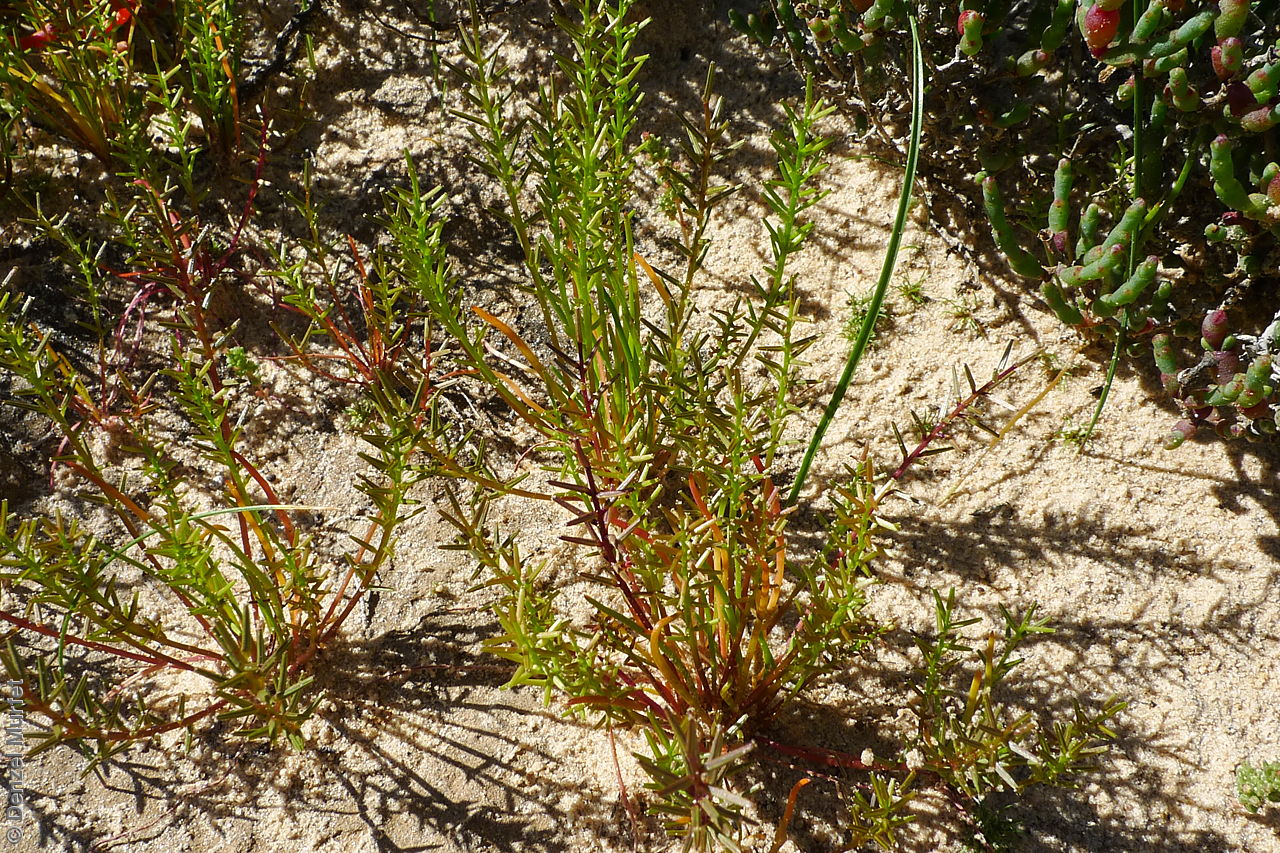
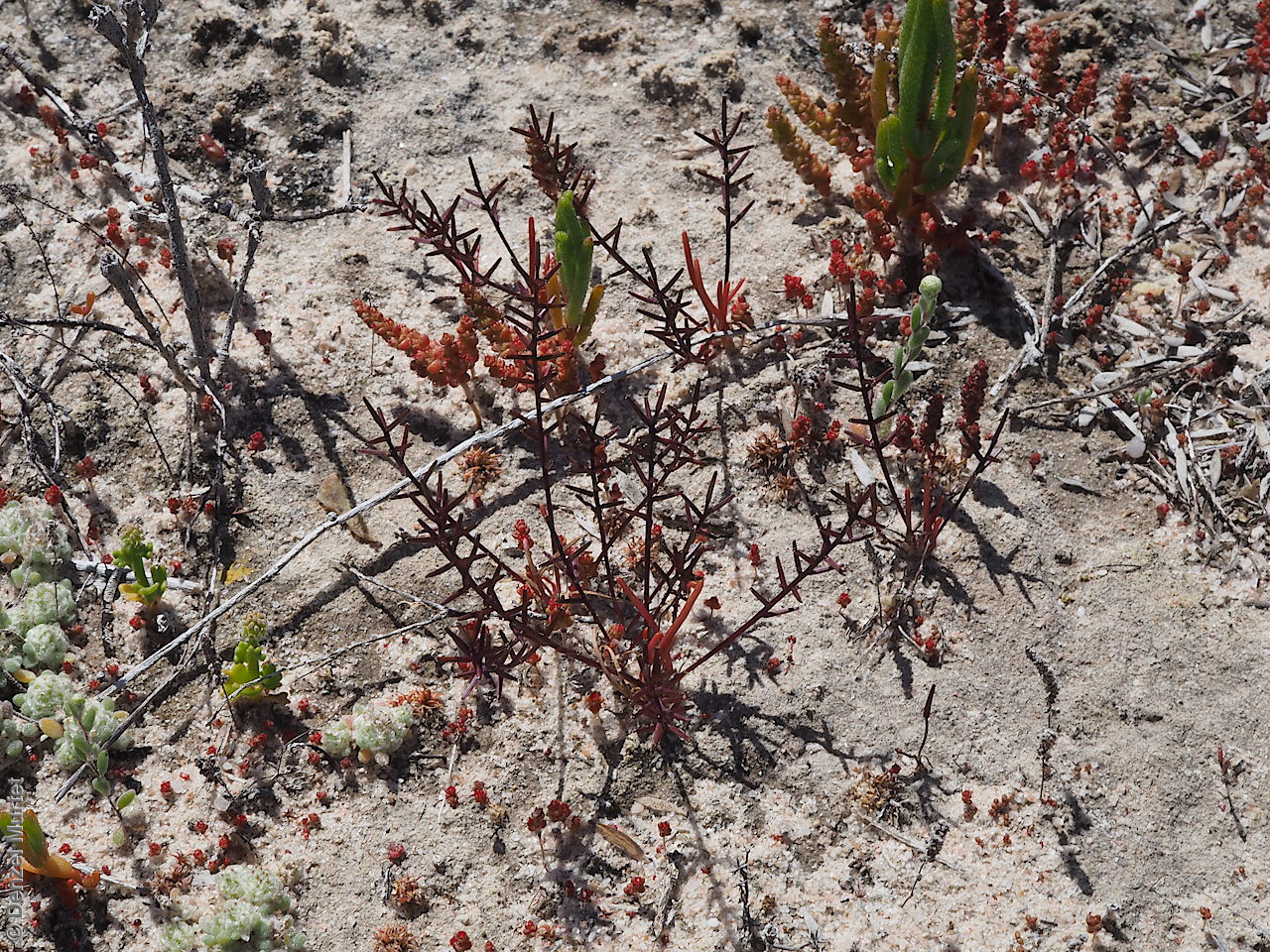
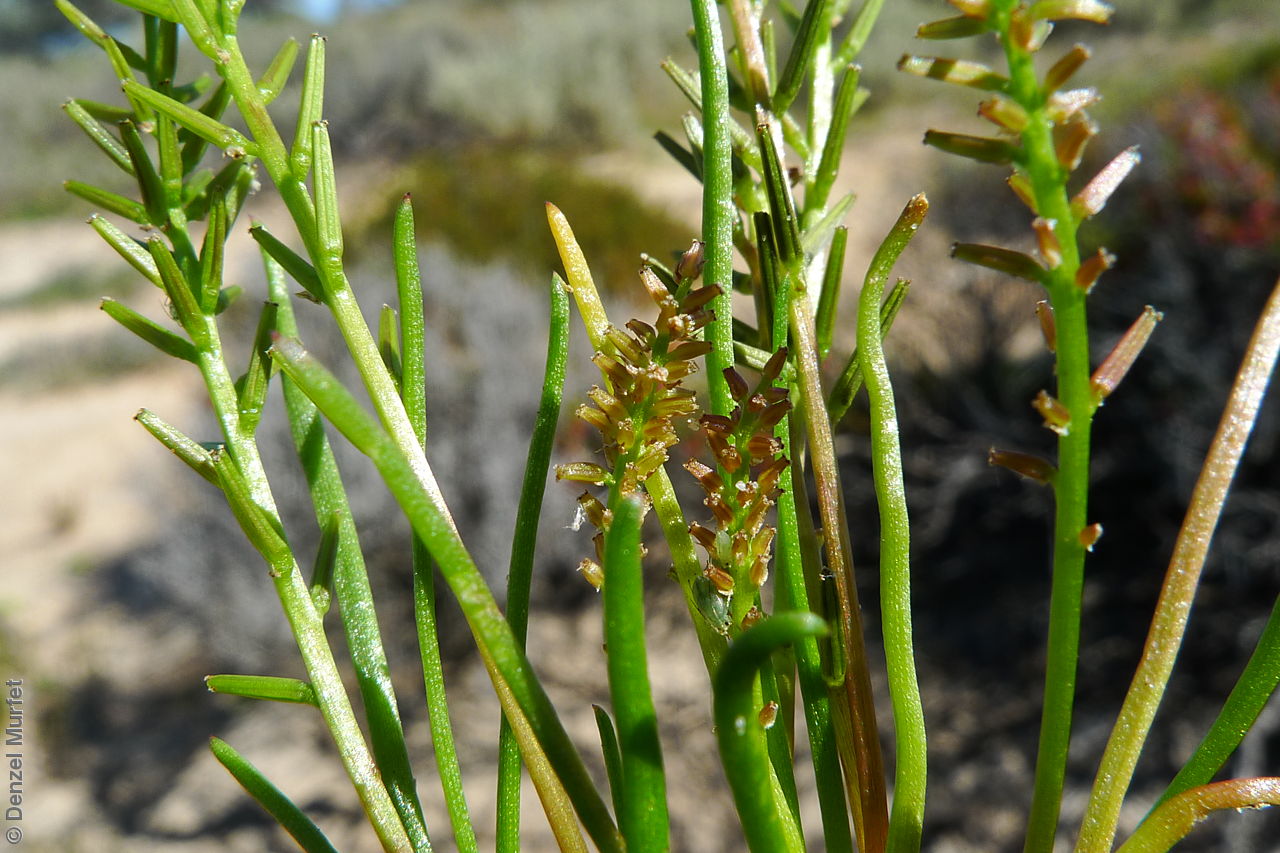
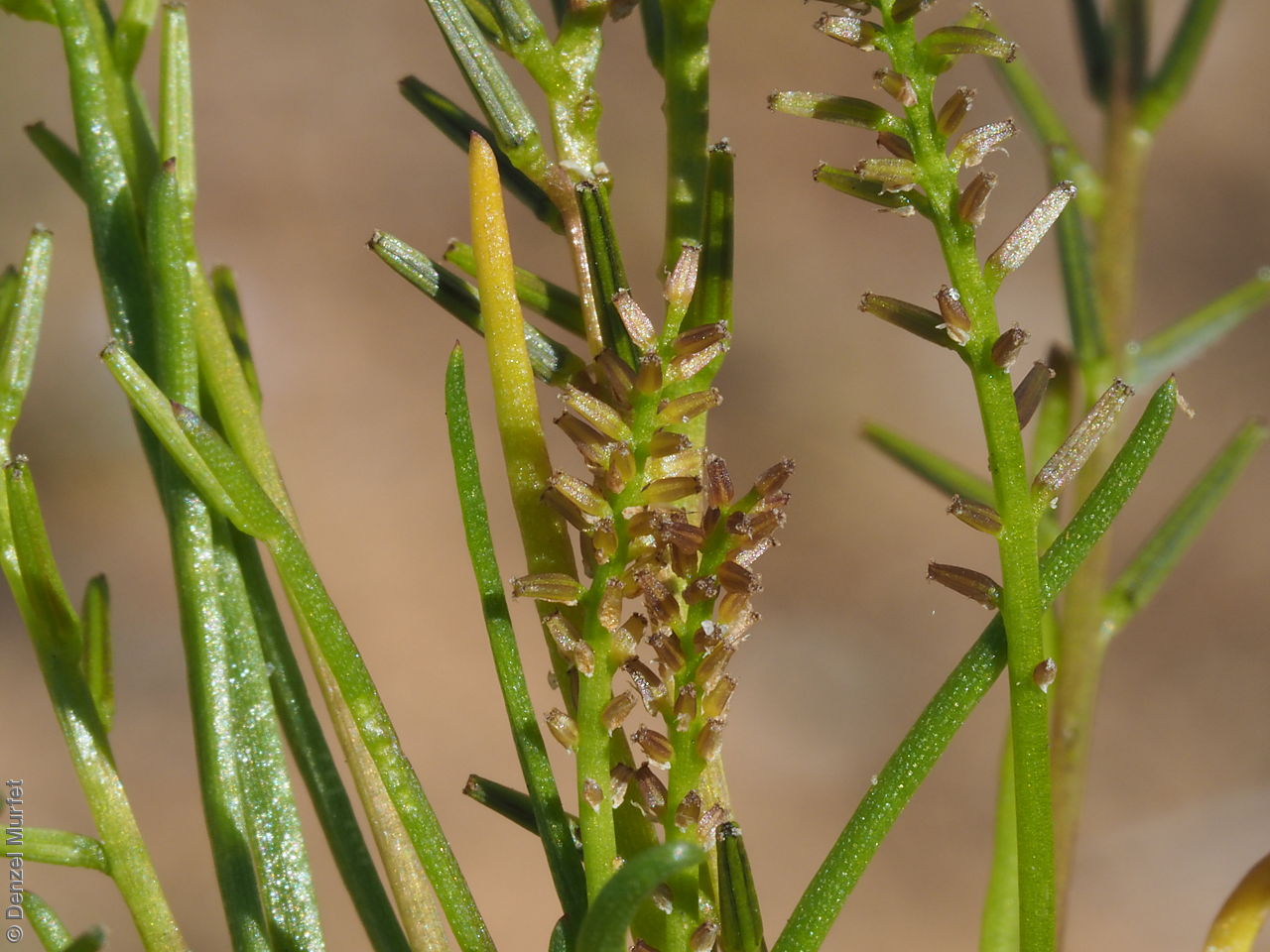
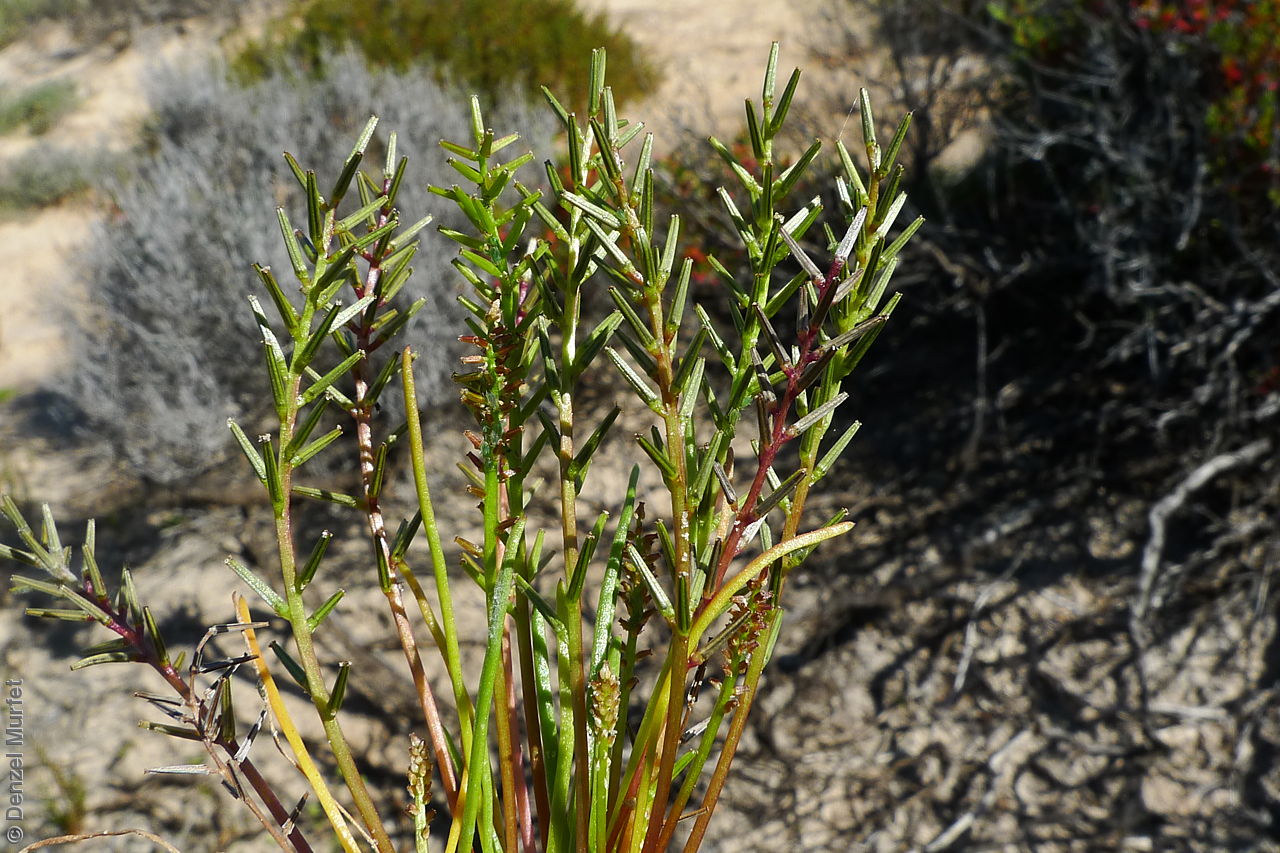
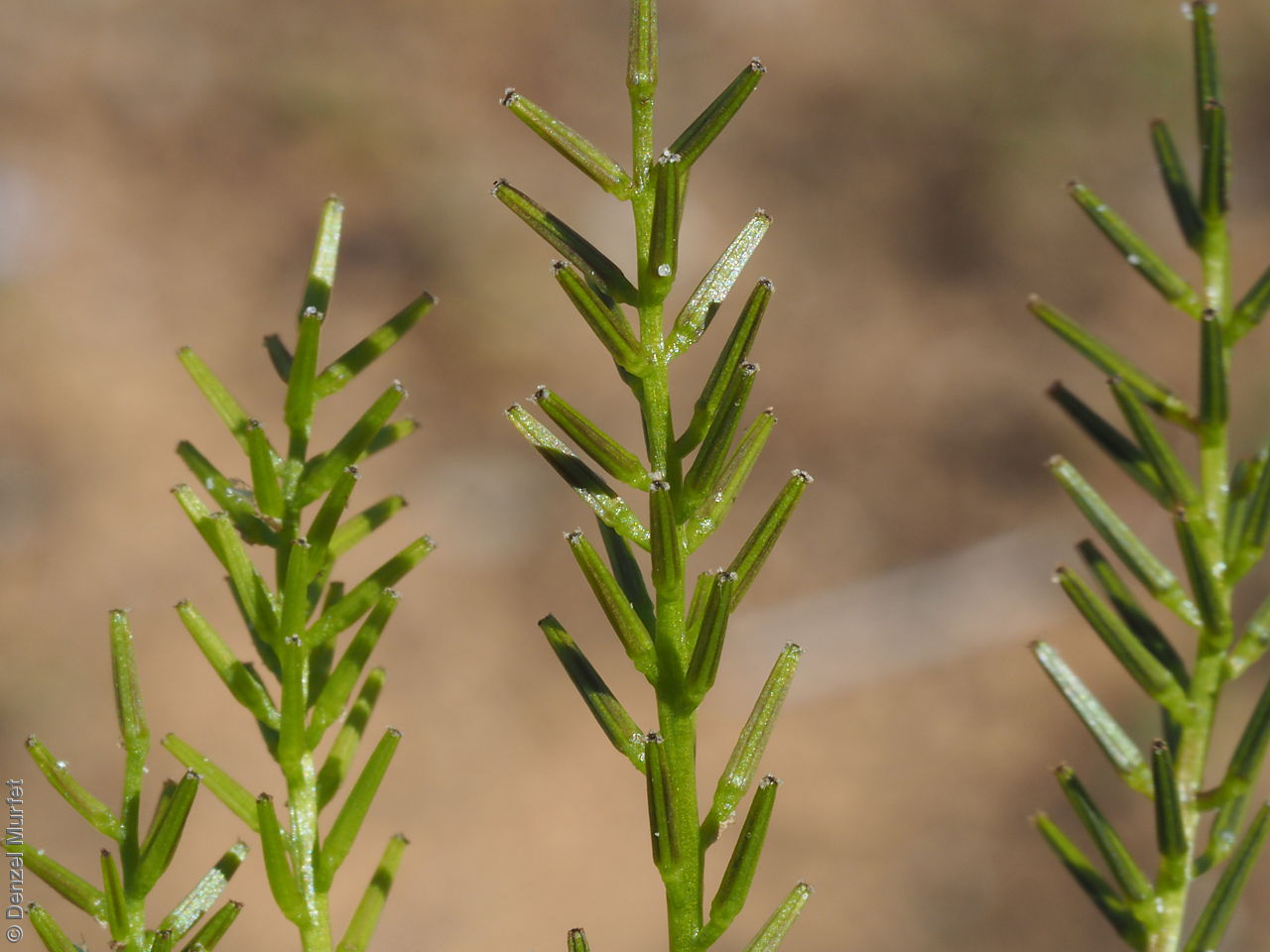
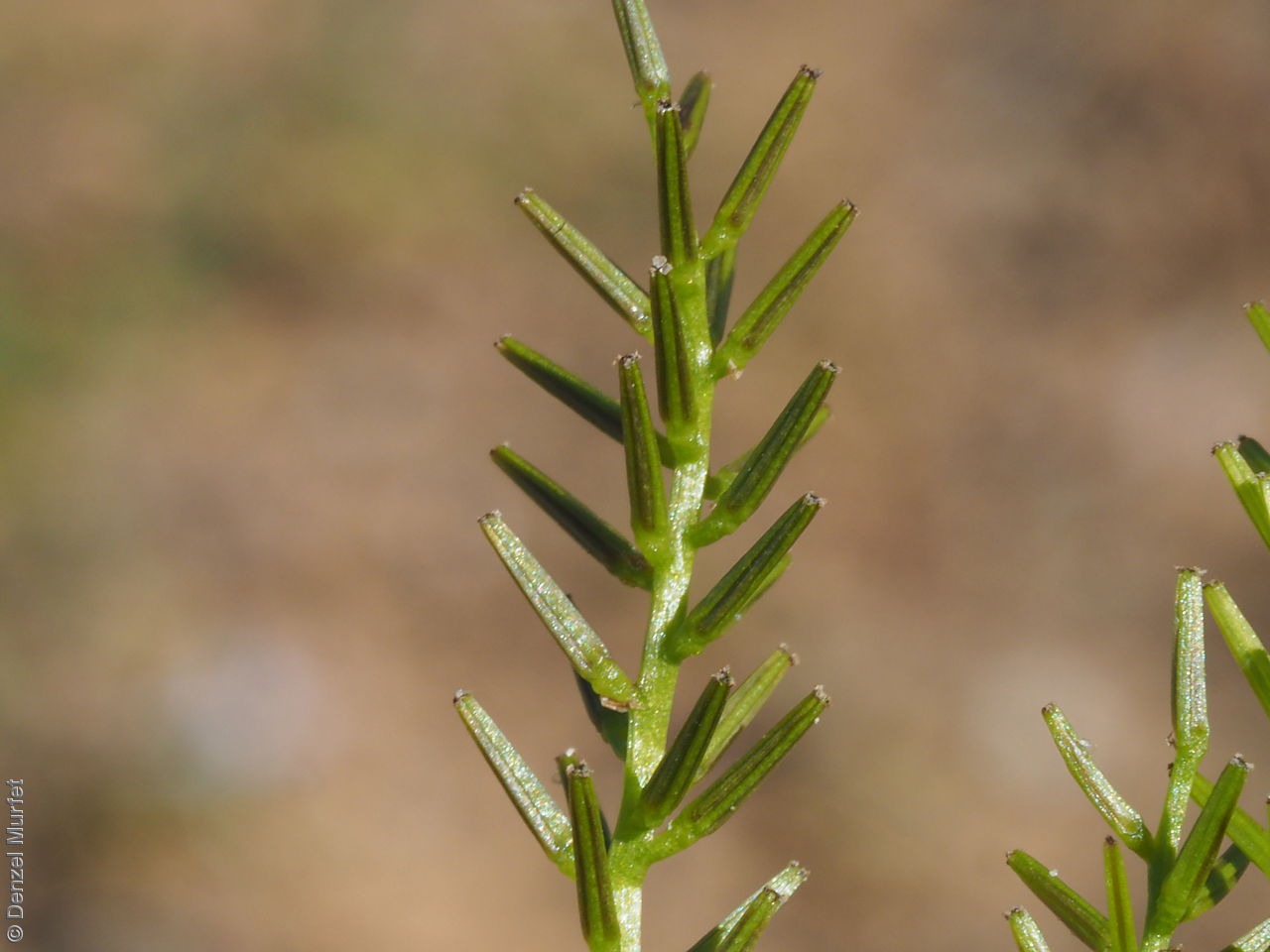
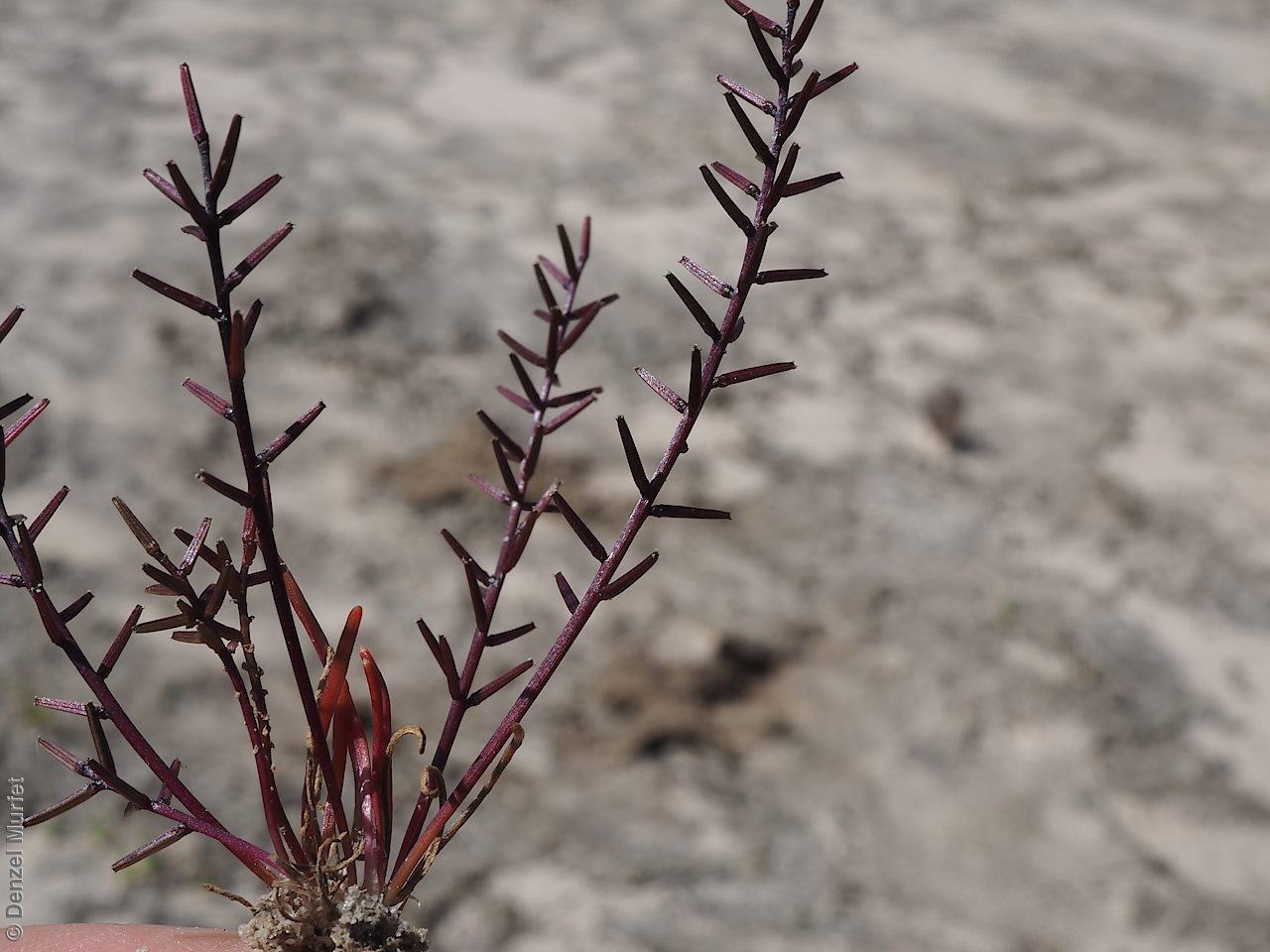
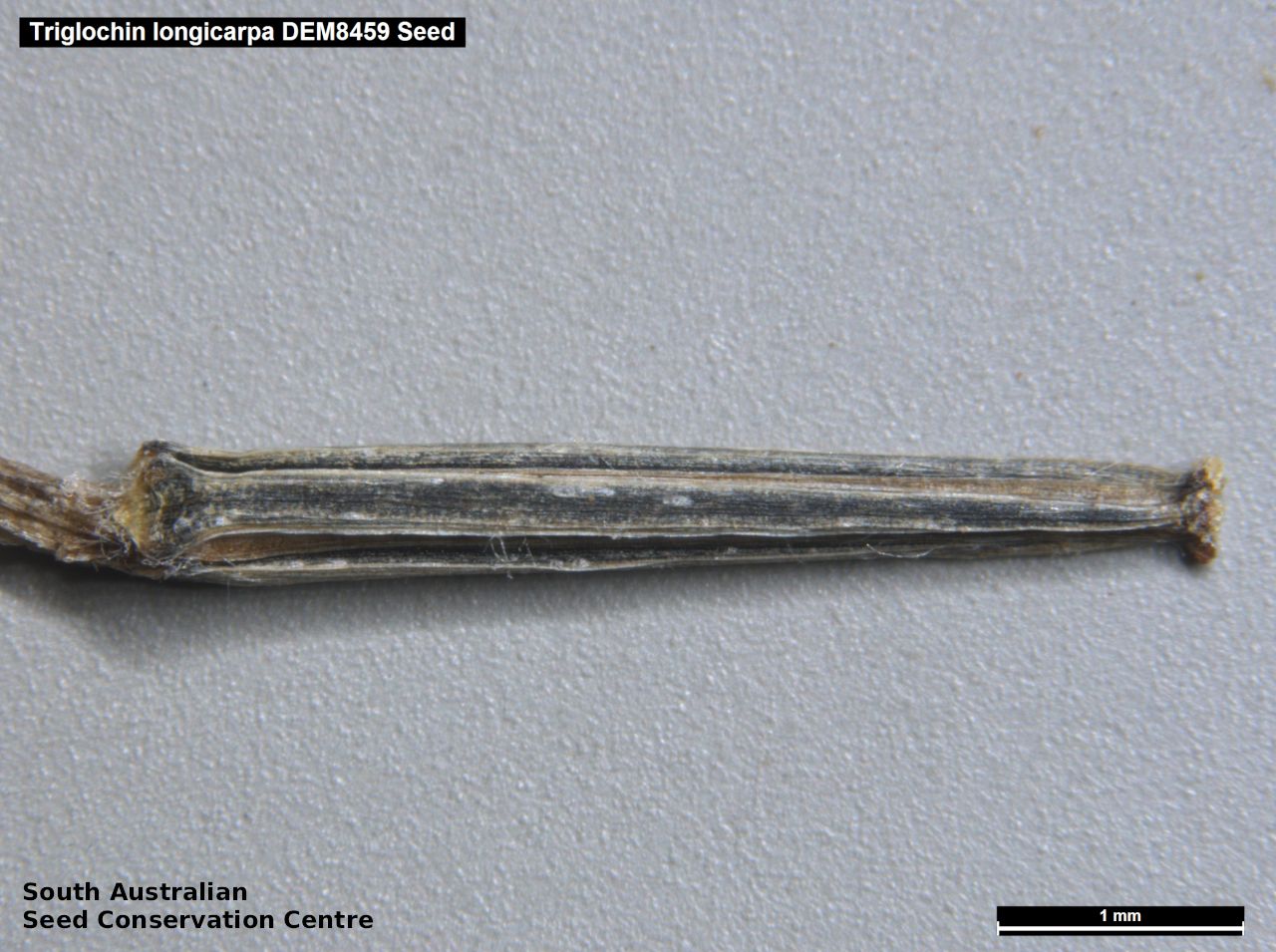
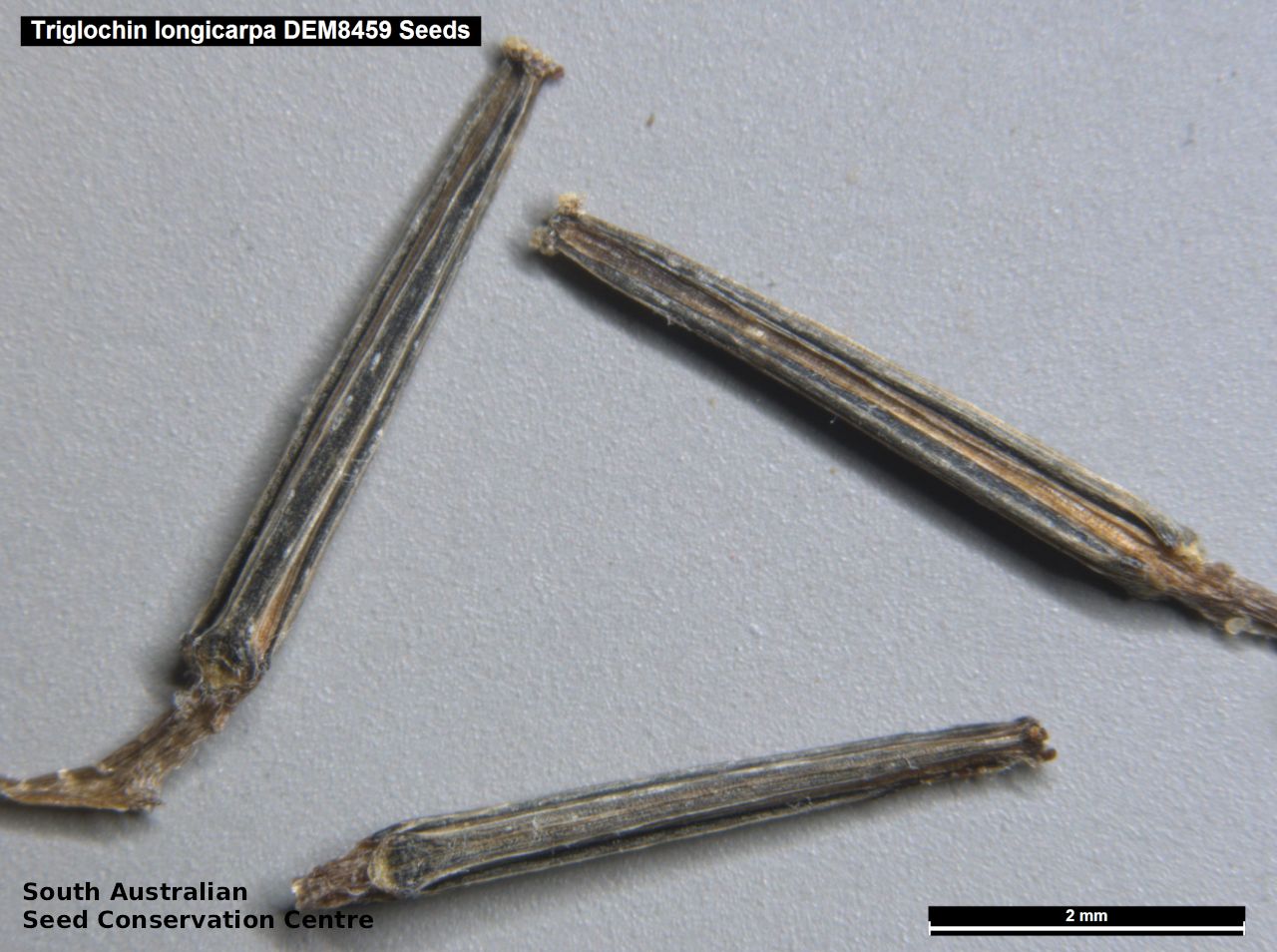
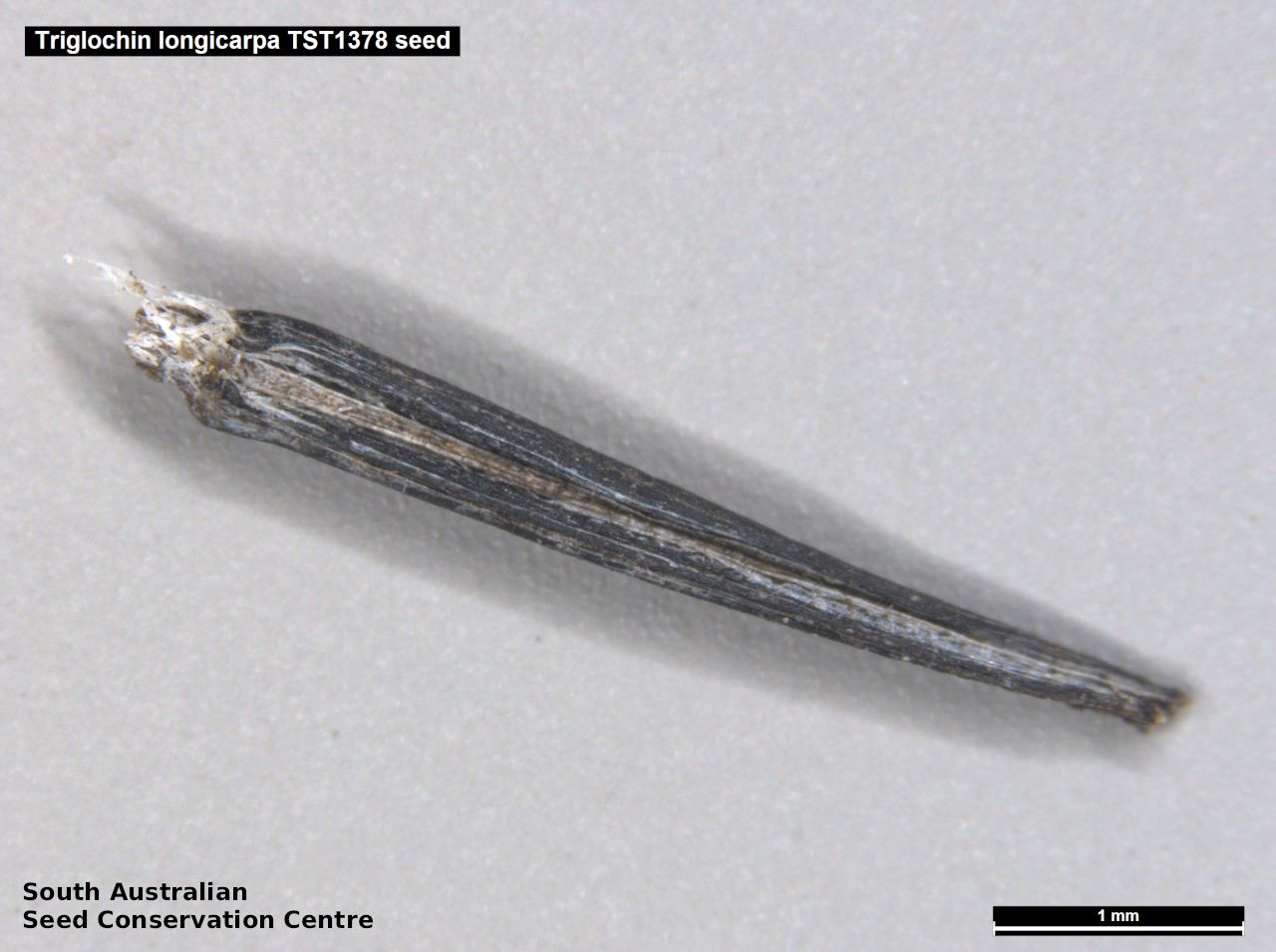
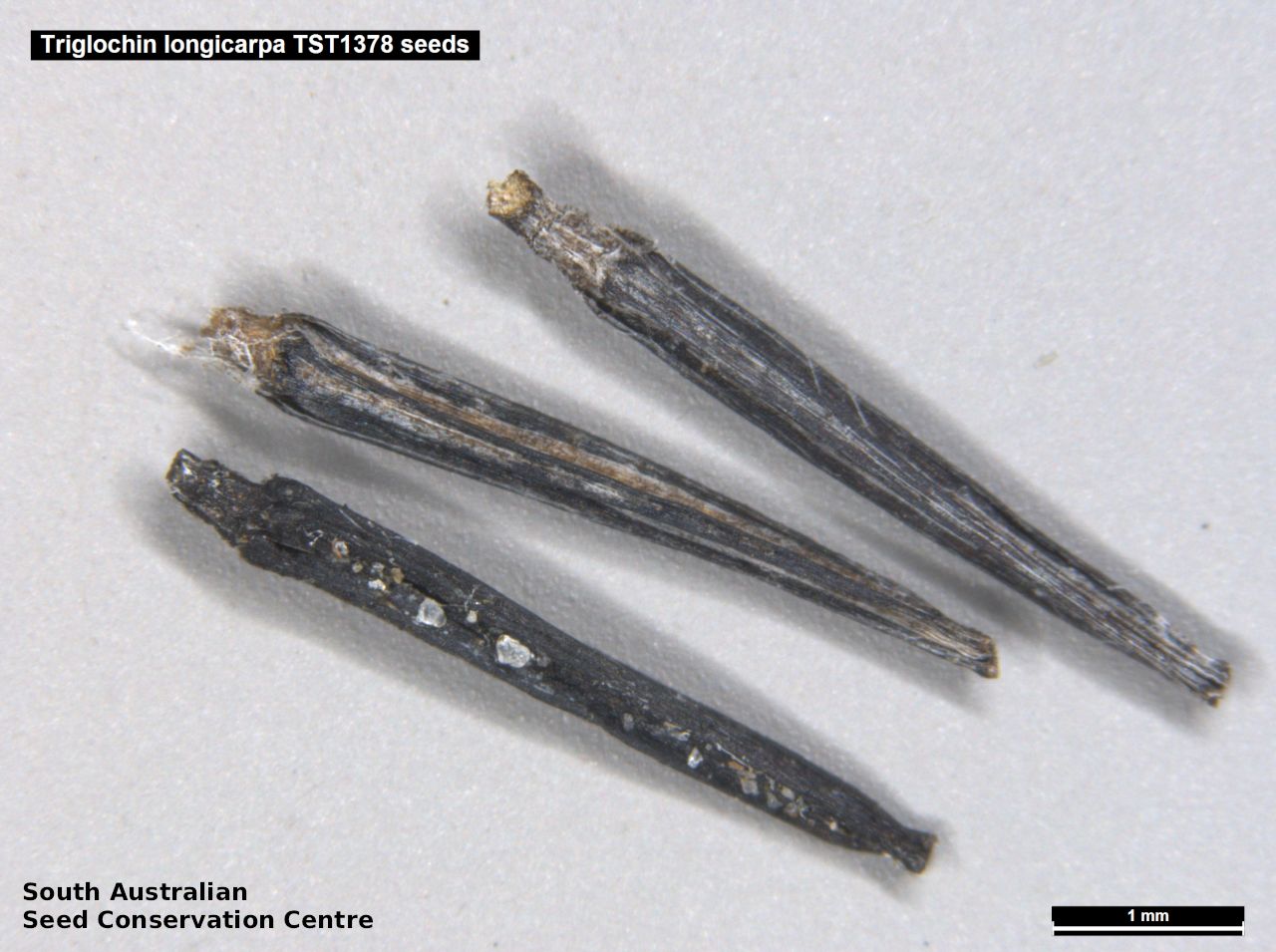
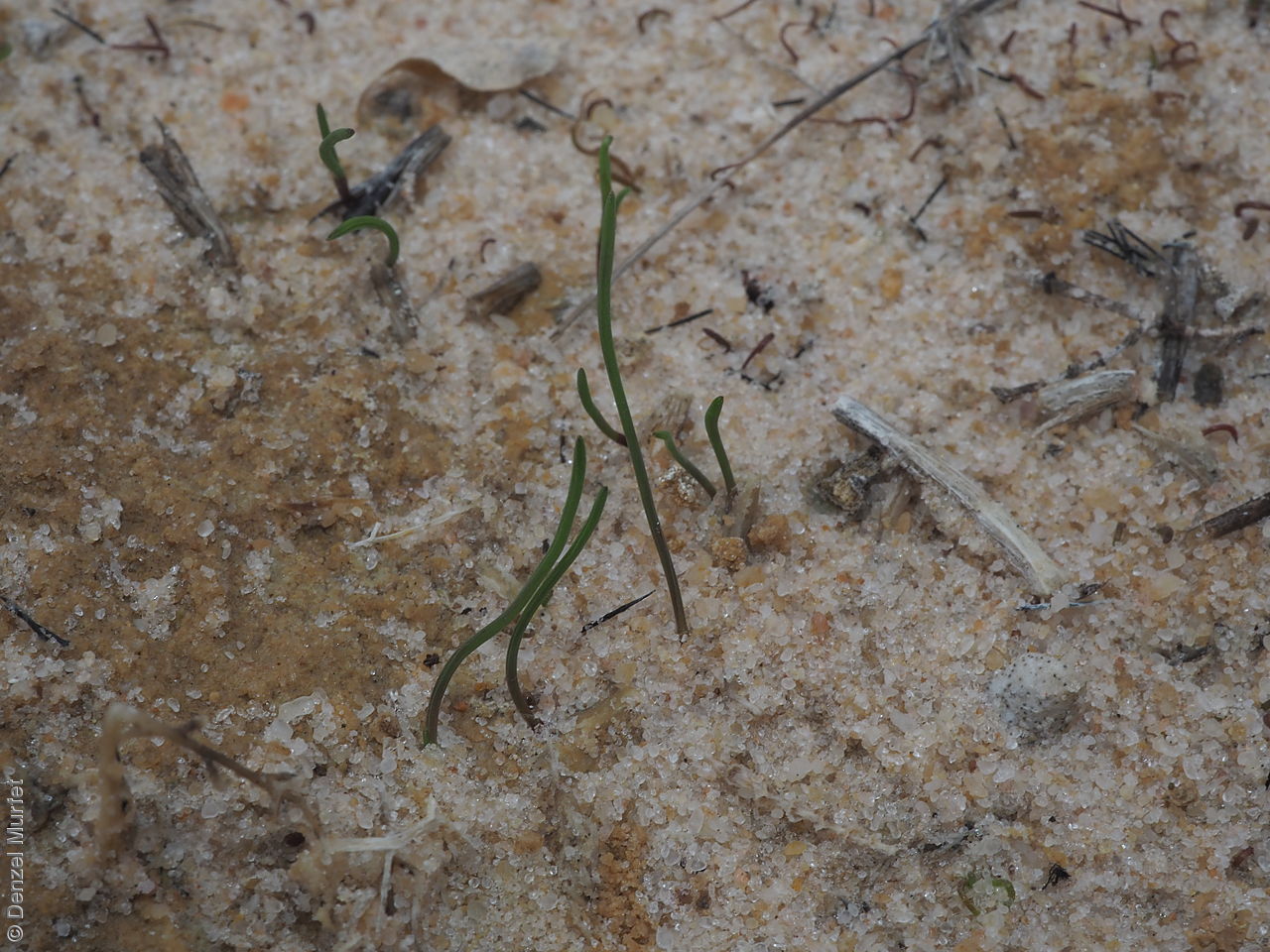
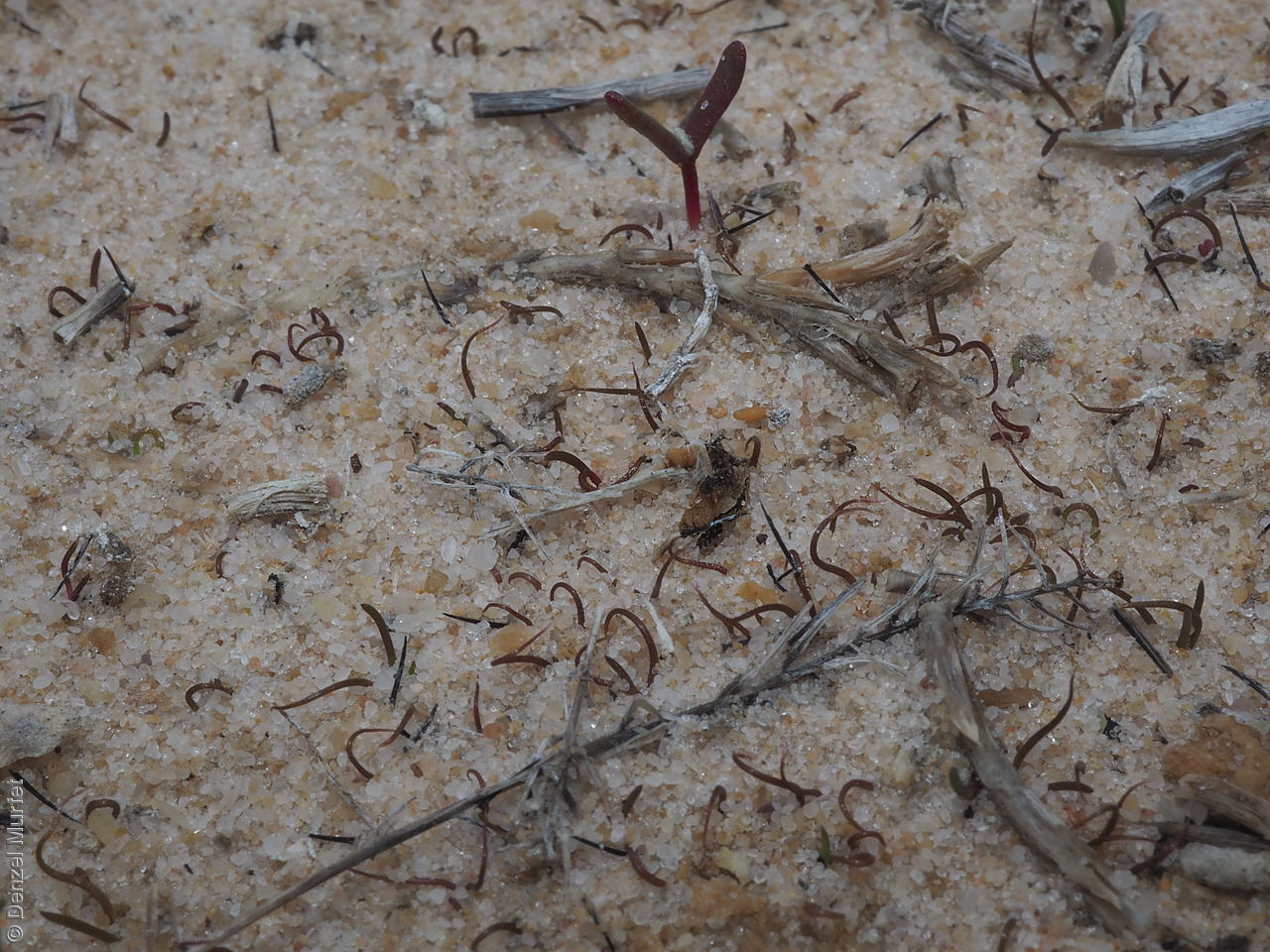

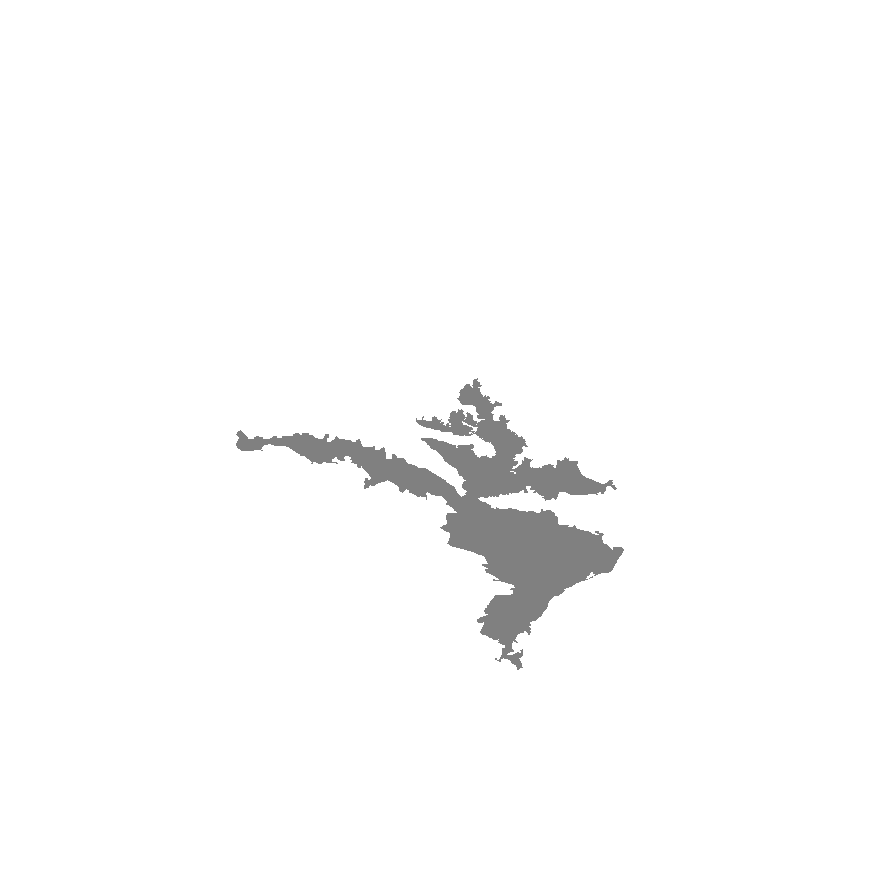
Botanical art
Prior names
Triglochin centrocarpum, orth.var., partly
Triglochin centrocarpa, partly
Triglochin sp. C Flora of Australia (P.G.Wilson 8811)
Triglochin sp. C (J.Z.Weber 6793)
Triglochin centrocarpa var. longicarpa
Triglochin centrocarpum, orth.var., partly
Common names
Long-fruited Arrowgrass
Dwarf Arrowgrass
Etymology
Triglochin from the Greek 'treis' meaning three and 'glochis' meaning a point; referring to its three-sided carpels. Longiarpa from the Latin 'longus' meaning long and 'carpos' meaning fruit; referring to its long fruits.
Distribution and status
Found on the Eyre Peninsula in South Australia, growing in damp sand loam and clay, often in saline soils near the edges of salt lakes and claypans. Also found in Western Australia and Victoria. Native. Rare in South Australia. Rare in Victoria. Common in Western Australia.
Herbarium regions: North Western, Eyre Peninsula
AVH map: SA distribution map (external link)
Plant description
Slender annual herb to 13 cm high. Leaves flat and tread-like, to 5.5 cm long, shorter than or as long as the inflorescence. Inflorescence erect or ascending, to 5.0 cm long, fruiting part at the top to 6.5 cm long with 6–54 fruits. Flowering between August to October. Fruits are straw-coloured narrowly cylindric, slightly expanded at base, fruit to 5.8 mm long and 0.5 mm wide on a very short stalk with six seed segments (carpels), 3 fertile alternating with 3 underdeveloped sterile ones. Seeds are straw-coloured narrow wedge-shaped seed with 2 minute downward incurved points to 0.1 mm long at the base, that do not extend beyond the segment outline. Seed embryo type is linear.
Seed collection and propagation
Collect seeds between September and November. Collect mature fruits either by breaking off individual spikes or by removing plants that are drying off with fruits that are straw-colour and seed segments coming apart easily. Place the fruit spikes in a tray and leave to dry for 1 to 2 weeks. Then rub the dried fruit spikes with a rubber bung to dislodge the seeds. Use a sieve to separate any unwanted material. Store the seeds with a desiccant such as dried silica beads or dry rice, in an air tight container in a cool and dry place.
| Location | No. of seeds (weight grams) | Number of plants | Date collected | Collection number Collection location | Date stored | % Viability | Storage temperature |
|---|---|---|---|---|---|---|---|
| MSB | 2,400 (0.127 g) | 50+ | 11-Oct-2017 | TST1378 Eyre Peninsula | 80% |
Number of plants: This is the number of plants from which the seeds were collected.
Collection location: The Herbarium of South Australia's region name.
% Viability: Percentage of filled healthy seeds determined by a cut test or x-ray.